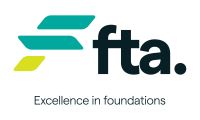7 December 2016
The state government recently released a Queensland Building Plan targeting key areas within the building and construction industry. It includes proposed changes to various policies and legislation with the aim of creating a safer, fairer and more sustainable industry with increased job opportunities and economic growth.
The state government recently released a Queensland Building Plan targeting key areas within the building and construction industry. It includes proposed changes to various policies and legislation with the aim of creating a safer, fairer and more sustainable industry with increased job opportunities and economic growth.
The Queensland Building Plan targets eleven key areas, including:
- Security of payment
- Queensland Home Warranty Scheme
- Plumbing and Drainage Act review
- Queensland Housing Code
- Reconfiguring a Lot Code
- Building certification
- Non-conforming products
- Inclusive communities
- Liveable housing design
- Licensing reforms
- Sustainable buildings.
Security of payment
The government’s objective is to ensure that ‘payments for subcontractors working in the building and construction industry are on time, every time and in full’.
Proposals include:
- Introducing Project Bank Accounts (PBAs) for projects over $1 million
- Amending the Building and Construction Industry Payments Act 2004 (BCIPA) to enhance the independence of the Adjudication Registry and introduce amendments to improve claims processes
- Implementing an education program for licensees
- Amending the Subcontractors’ Charges Act.
There will be a proposed 12-month trial of PBAs on government projects valued between $1 million and $10 million, starting in January 2018. If it is successful, PBAs will be expanded to apply to all projects (including the private sector) above $1 million from January 2019.
Queensland Home Warranty Scheme
Following changes to the Home Warranty Insurance Scheme that took effect from 28 October 2016, the entire scheme is now open for review, which enables any issues that were previously overlooked to be rectified.
The review aims to determine whether:
- The $3,300 threshold for home warranty insurance cover is appropriate
- There should be higher insurance premiums for contractors with a higher than average percentage of claims or directions to rectify against them
- Coverage for prefabricated homes should include defects in off-site manufacture
- The premium calculation method for common property is suitable.
Plumbing and Drainage Act review
Proposals include:
- Streamlining the permit process
- Implementing a two-day fast track approval process for new work on class 1a or class 10a buildings
- Implementing 10-day approval for the standard plumbing permit (including class 2-9)
- Facilitating off-site construction of prefabricated bathroom modules
- Improving the monitoring of construction and maintenance of on-site sewage and grey water treatment plants
- Improving plumbing installations for buildings constructed on reactive and unstable soils
- Facilitating the use of innovative plumbing products and solutions.
Government is seeking feedback on the orientation of collectors for solar hot water systems.
The Queensland Housing Code (QHC) aims to reduce or eliminate the need for local government to include alternative options in their planning schemes for setbacks and site cover on houses and duplexes.
It will support housing affordability, allow for innovation and improve around the sitting provisions for a building depending on lot size.
There is a proposal that the QHC apply to Class 1 buildings, dual dwellings and associated Class 10a buildings and structures as a replacement to the current Queensland Development Code mandatory parts MP 1.1, MP 1.2 and MP 1.3.
Government is seeking feedback on whether the QHC should be made mandatory throughout Queensland, and advice on ways to simplify processes and eliminate duplication between planning and building assessments.
The Reconfiguring a Lot Code will be a set of standards for the subdivision of land and neighbourhood design. When used in conjunction with the Queensland Housing Code it will provide a framework for innovation in subdivision housing design and ensure approvals are simpler, faster and less costly.
The Reconfiguring a Lot Code won’t specify a minimum lot size but instead provide flexibility to nominate smaller lots or micro lots to achieve good design outcomes, diverse housing and affordability. It is intended to support local government in choosing a range of lot sizes.
In the case of significant developments, the government is also considering a new requirement for the certifier to obtain advice from local government on the consistency of the building plan with the planning approvals and planning scheme requirements.
Building certification
In response to a 2015 review of building certification, a range of measures have been proposed to improve the building certification framework.
Proposals include:
- Enabling owners to obtain more inspections and call for a final inspection if issues arise between a certifier and builder
- Adding restrictions on the use of ‘competent persons’ and a requirement for a certifier to physically attend mandatory inspections
- Introducing new mandatory inspections for fire separation in duplexes and townhouses
- Giving local government sole responsibility for taking enforcement action so that certifiers are no longer able to do this
- Tightening the rules for engaging a certifier
- Introducing a new ‘cab rank’ model for assigning building certifiers, which has a standardised fee structure and is managed by the QBCC.
In the Building Plan the government has formally acknowledged the problem of non-conforming products and its responsibility to take action. A proposed list of additional QBCC powers has been floated, aimed at improving the response to an identified non-conforming building product (NCBP).
Proposals include:
- Auditing and investigating buildings that are not active building sites
- Entering a building, taking samples for testing and seizing evidence
- Requiring parties other than building industry licensees, such as retailer or manufacturers, to produce information about alleged NCBPs
- Declaring a building or building site unsafe
- Directing rectifications of an unsafe building or building site
- Prosecuting offences related to supplying or installing an NCBP
- Applying to charge a cost recovery fee for any evidence-gathering and testing of proven NCBPs
- Enshrining the Queensland Building and Construction Product Committee (or similar) in legislation
- Giving the Minister or the QBCC power to ban or prohibit an NCBP.
There is one further proposal aimed at the point-of-sale, which involves restricting the sale of certain plumbing products that are not WaterMark certified.
Inclusive communities
A number of proposals have been put forward to help improve amenities in public buildings and make them more accessible for people with disabilities. The proposals aim to complement changes made in 2011 through the Premises Standard under the National Construction Code.
Proposals include:
- Larger ‘family rooms’
- Accessible public toilets
- Continence bins
- Quiet areas for people experiencing sensory overload.
Government is seeking feedback on whether these proposed changes to public buildings should be mandatory, and which buildings they should apply to and where.
Liveable housing design
In 2010, industry agreed to a number of design elements being voluntarily incorporated into new housing in order to meet the changing needs of occupants throughout their lifetime.
The goal was that by 2020 all new homes would include eight silver-level design elements, such as step-free entrances and wider doors and corridors.
There were targets along the way; 25% of all new housing by 2013, 50% by 2015, 75% by 2018. As these targets haven’t been achieved, a range of mandatory and voluntary proposals have been explored.
Proposals include:
- Providing financial incentive to new homebuyers to include a minimum of silver-level design features in new dwellings
- Developing case studies and display homes in partnership with industry to promote liveable housing design to builders and consumers
- Mandating a minimum standard (silver level) of liveable housing design be included in all new residential dwellings by 2020 – with some exemptions considered for steep properties and very small lots
- Registering all Liveable Housing Australia compliant properties on a public database so consumers seeking liveable housing can locate suitable properties.
Licensing reforms
Proposals include:
- Increasing the existing $3,300 threshold for when a licence is required
- Requiring all waterproofing work be carried out by a licensed person (regardless of value)
- Licensing of energy assessors
- Licensing of plumbing and drainage apprentices
- Introducing a continuing professional development scheme.
The government aims to improve the sustainability performance of buildings, including reducing carbon emissions. Proposed initiatives cover new houses and units, existing houses and units, commercial buildings, compliance programs, and its own building stock.
Proposals include:
- Adopting the national 6-star standard for new units
- Providing information to supports industry practitioners and increase householder awareness
- Adopting a maintenance standard for commercial buildings
- Encouraging living roofs and walls by adopting a voluntary building standard for commercial buildings
- Improving documentation requirements for energy efficient features in house plans
- Oversight of house energy assessors.
How to get involved
Attend a government-hosted, state-wide consultation session in February or March next year.
Complete our next Survey of Industry Conditions, which will be emailed to you next week. The Queensland Building Plan will be out hot topic, so you'll be asked to answer a few short questions relating to each of the key topic areas.
Share your comments with us by calling 1300 30 50 10 or sending us an email. We'll be collating all the feedback and preparing a submission to state government.





